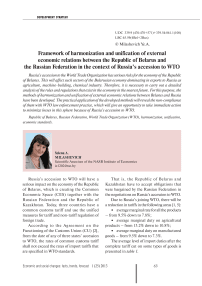Framework of harmonization and unification of external economic relations between the Republic of Belarus and the Russian Federation in the context of Russia's accession to WTO
Автор: Milashevich Yelena Aleksandrovna
Журнал: Economic and Social Changes: Facts, Trends, Forecast @volnc-esc-en
Рубрика: Development strategy
Статья в выпуске: 1 (25) т.6, 2013 года.
Бесплатный доступ
Russia’s accession to the World Trade Organization has serious risks for the economy of the Republic of Belarus. This will affect such sectors of the Belarusian economy dominating in exports to Russia as agriculture, machine-building, chemical industry. Therefore, it is necessary to carry out a detailed analysis of the rules and regulations that exist in the economy in the nearest future. For this purpose, the methods of harmonization and unification of external economic relations between Belarus and Russia have been developed. The practical application of the developed methods will reveal the non-compliance of them with WTO law enforcement practice, which will give an opportunity to take immediate action to minimize losses in this sphere because of Russia’s accession to WTO.
Republic of belarus, russian federation, world trade organization (wto), harmonization, unification, economic standards
Короткий адрес: https://sciup.org/147223439
IDR: 147223439 | УДК: 339.9
Текст научной статьи Framework of harmonization and unification of external economic relations between the Republic of Belarus and the Russian Federation in the context of Russia's accession to WTO
Russia’s accession to WTO will have a serious impact on the economy of the Republic of Belarus, which is creating the Common Economic Space (CES) together with the Russian Federation and the Republic of Kazakhstan. Today, three countries have a common customs tariff and use the unified measures for tariff and non-tariff regulation of foreign trade.
According to the Agreement on the Functioning of the Customs Union (CU) [2], from the date of any of three states’ accession to WTO, the rates of common customs tariff shall not exceed the rates of import tariffs that are specified in WTO standards.
That is, the Republic of Belarus and Kazakhstan have to accept obligations that were bargained by the Russian Federation in the negotiations on Russia’s accession to WTO.
Due to Russia’s joining WTO, there will be a reduction in tariffs in the following areas [ 1, 5 ] :
-
• average marginal rate for all the products – from 9.5% down to 7.8%;
-
• average marginal duty on agricultural products – from 13.2% down to 10.8%;
-
• average marginal duty on manufactured goods – from 9.5% down to 7.3%.
The average level of import duties after the complete tariff cut on some types of goods is presented in table 1 .
A new rate of duties will be effective for one third of goods since the date of Russia’s accession to WTO; as for other goods, a transitional period from 2 to 8 years will be used for them according to the type of product: for example, a transitional period of 8 years was determined for poultry, a period of 7 years – for cars, helicopters, civil aircraft.
Tariff quotas on some imported foodstuffs will be kept after Russia’s accession to WTO: import within the quotas will be liable to lower duties, import over the quotas will be liable to higher duties (tab. 2) .
Russia’s commitments to WTO for a number of commodity items, which include about 2.5 thousand goods, are below the current common customs tariff. External rates of duties on one thousand commodity items are 7 – 15% lower than the current common customs tariff, and they are 4 – 6.5% lower on the rest 1.5 thousand items.
Tables 1 and 2 show that the restrictions adopted by the Russian Federation will have a significant impact on the economy of the Republic of Belarus [ 3 ] :
-
1. Belarusian milk products can be driven out of the market in Russia, while they are
significant source of currency earnings to the country: at the end of 2010 commodity group “Cheese and Curd” headed the list according to the cost of commodity exports from Belarus to Russia passed ahead of the position “Trucks and Tractors”.
-
2. Due to the increase in Russia’s tariff quotas for imported food and zero duties on pork, there will be a decline in prices for livestock products, which will have a negative impact on the standing of Belarusian farmers: livestock production occupies 90% of food exports in Belarus.
-
3. Increased competition will affect the leading Belarusian industry – machinebuilding, including farm-machinery industry, most production of which is exported to Russia: import duties on almost all the types of agricultural machinery will be reduced.
-
4. Low tariff commitments of Russia will increase the imports from the third countries to the territory of the Customs Union; this will involve such industries as chemical and woodworking.
The study is aimed at the development of the methods of harmonization and unification of external economic relations between the
Table 1. Changes in the level of import duties after the complete tariff cut in accordance with Russia’s commitments to WTO [5]
|
Production |
Tariff rate in accordance with commitments to WTO, % |
Current tariff rate, % |
|
Dairy products |
14.9 |
19.8 |
|
Crops |
10.0 |
15.1 |
|
Chemical products |
5.2 |
6.5 |
|
Cars |
12.0 |
15.5 |
|
Wood and paper |
8.0 |
13.4 |
|
Information technology products |
0 |
5.4 |
Table 2. Tariff quotas adopted by Russia in accordance with the commitments to WTO, on some imported goods [1,5]
|
Production |
External rates of duties within a tariff quota, % |
External rates of duties over a tariff quota, % |
|
Beef |
15 |
55 |
|
Pork |
0, since 2020, on a flat scale – 25 |
65 |
|
Some types of cultured milk foods |
10 |
15 |
|
Some types of poultry products |
25 |
80 |
Republic of Belarus and the Russian Federation in the context of Russia’s accession to WTO.
We can see that Russia’s accession to WTO is resulted in the changes that concern not only the common customs tariff, but technical regulations, standards and rules of veterinary checks and phytosanitary control, volume and nature of governmental support for various economical sectors of the Republic of Belarus.
In the near future, it is necessary to carry out a detailed analysis of the current standards and regulations in the economic field of the republic and develop the measures to level a negative impact of Russia’s accession to WTO on the economy of Belarus. All these steps require the harmonization and unification of the legislation in the Republic of Belarus.
At the same time, it is assumed, for example, the following harmonization of VAT rates: it accounts for 20% in the Republic of Belarus [ 4 ] and 18% in the Russian Federation. It is clear that the reduction of VAT rates down to the level of Russia will significantly reduce the budget revenues in Belarus because VAT revenues account for 31% of the revenue side of its budget (according to the results of 2011).
But the current rate of 20% can lead over time to the fact that business and taxpayers will be to look for more favorable variants move to Russia in the conditions of free movement of goods, services, capital and labour contained in the documents adopted within the framework of the Customs Union and the Common Economic Space.
This is precisely why the harmonization, i.e. the development of common agreed principles and measures for their implementation to solve one or another problem in the economic sphere, is necessary.
The level of harmonization implies the elimination of the differences in the national legislations of Belarus and Russia for the benefit of intensifying the foreign economic relations between these countries in order to create common legal basis of the economic sectors. Harmonization will facilitate a mild impact of intergovernmental mechanisms on the development of consistent and coordinated activity of Belarus and Russia in the field of external economic relations.
The ways to implement the harmonization have been developed as part of the methodology (fig. 1) .
It is necessary to use the experience of other countries and regional organizations, as well as take into account the negative effects of the global financial crisis when implementing the harmonization in the Republic of Belarus and the Russian Federation.
We suggest the algorithm of harmonization within the frameworks of the methods developed (fig. 2) .
The proposed technique defines the methods that should be used to implement the harmonization:
-
1. The Republic of Belarus and the Russian Federation develop consistently the common principles and measures to achieve them.
-
2. The country (Belarus and Russia) introduces some laws or regulations of another country in its own economic system.
There are the areas of harmonization in the methodology that include the introduction of model legislation into national legislative acts , i.e. the development of recommended (model) legislative acts in the economic sphere. Today, model legislation is widely used in international contacts because model laws are suitable to change the national legislation by developing a national act on the basis of the common text but in view of specific character of the country. The development of model legislation should be based on the best international practice and generally recognized principles of international law (fig. 3) .
The next area of the process of harmonization is filling the gaps in the national legislation in the economic sphere with new laws and other regulations to comply with common principles and standards; bringing the current economic legislation to conformity with the provisions of international agreements.
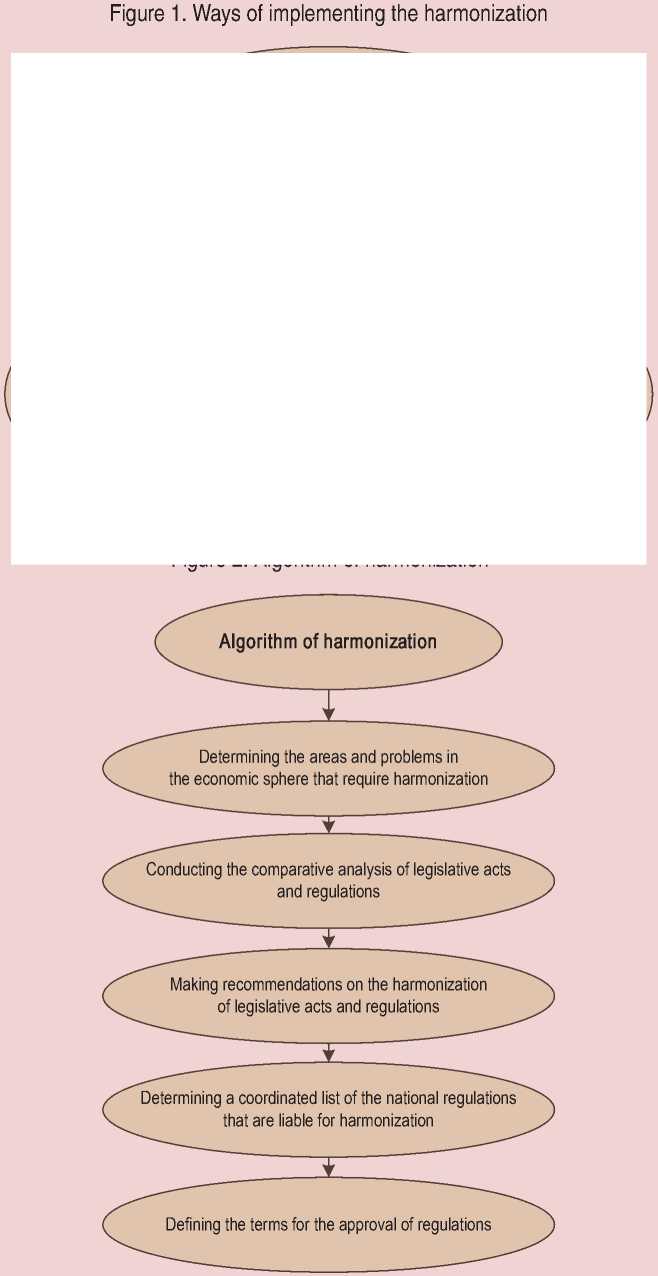
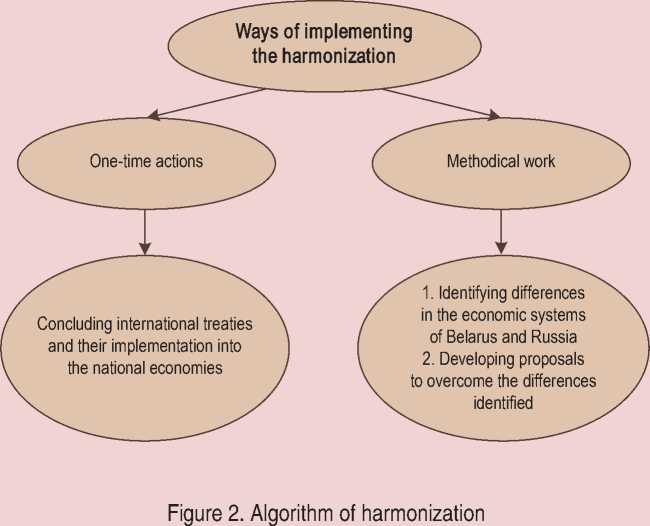
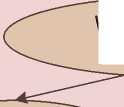
Ways of implementing the model acts
Figure 3. Ways of implementing the model acts

Issuing of a separate model act
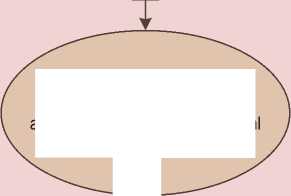
The Republic of Belarus and the Russian Federation adopt a separate model act as a national legislative document
Development of separate model rules and provisions
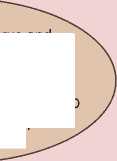
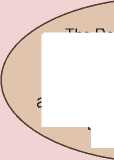
The Republic of Belarus and the Russian Federation use separate model rules and provisions by including them into the existing legislation
The Republic of Belarus and the Russian Federation are not always ready to develop a common approach to specific economic issues due to various objective reasons and arguments of little substance. Therefore, we propose to develop a procedure for the preparation, adoption and implementation of agreements and decisions made by both states, and their transformation into the economic systems of our countries, as well as to develop the common principles and objectives formulated in the form of recommendations for reviewing the statutory wordings in the economic sphere.
The need for unification has been caused by Russia’s accession to WTO and spreading of Russia’s commitments to all the members of the Common Economic Space. This means that the Republic of Belarus should unify its own regulations according to Russia’s commitments in the near future.
These measures are necessary to bring the regulations and standards of Belarus into conformity with international ones, improve the competitiveness of the national economy and implement the further trade liberalization. In future, this will allow the Republic of Belarus to join WTO on the transparent and agreed terms and become a participant enjoying full rights in the multilateral trading system. Belarus’ accession to WTO will mean functioning within WTO legal framework; however, we have no access to dispute resolution mechanism within the multilateral trading system of WTO because our country is not a member of the World Trade Organization. It is possible to characterize the current situation as follows: we have commitments, but we have no rights.
The process of unification involves the reduction of economic standards and principles to a complete uniformity, a common form, a common standard.
Algorithm of unification is depicted in figure 4 .
The methodical basis of comparative analysis of the economic standards of Belarus and Russia have been developed, which include the following components:
-
1. Tasks of comparative analysis:
-
• collection and analysis of information on economic standards of Belarus and Russia;
-
• identifying the differences in economic standards, economic principles;
-
• making recommendations to change economic standards and regulations.
Figure 4. Algorithm of unification

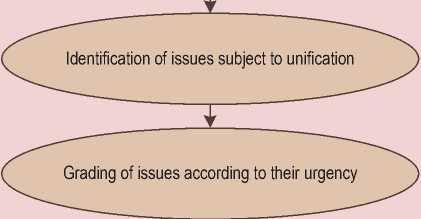
Comparative analysis of economic standards of Belarus and Russia, highlighting the essential differences
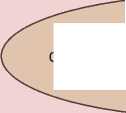
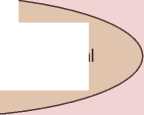
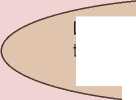
Development of measures for minimizing the consequences of changing economic standards and rules

-
2. Requirements for comparative analysis:
-
• the completeness of analyzed material on the subject;
-
• the comparability of statutory wordings according to the identity of issues to be solved;
-
• the objectivity of analysis and assessments.
-
3. The types of decisions can be:
-
• changes in economic standards and regulations;
-
• abolition of the previously established restrictions, benefits, etc.
-
4. Objects of comparative analysis:
-
• economic systems on the whole;
-
• sectors as holistic establishments regulating the specific types of economic relations;
-
• international treaties between Belarus and Russia and the acts of the Custom Union and the Single Economic Space with regard to the economic sphere of regulation;
-
• national regulations, including executive power acts and departmental regulations;
-
• specific regulations or the groups of interrelated standards.
-
5. Stages of comparative study:
-
• studying economic standards and regulations;
-
• comparing the content and types of notions and economic terms;
-
• selecting the texts of normative standards, thematic selection of international agreements;
-
• presentation of research results.
-
6. Results of comparative study:
-
• in the form of proposals and recommendations in order to eliminate some provisions that hinder the process of unification;
-
• other final documents containing the proposals on the ways and means of unification.
Conclusions and proposals
Russia’s accession to WTO resulted in serious impacts on the Republic of Belarus. The changes will affect not only the common customs tariff, but technical regulations, standards and rules of veterinary checks and phytosanitary control, the volume and nature of governmental support for various sectors of Belarus’ economy. In the near future, the republic should carry out a detailed analysis of current economic standards and regulations and develop the measures to level the negative impact of Russia’s accession to WTO on the economy of Belarus. All these facts are resulted in the need for the harmonization and unification of the legislation in the Republic of Belarus. Their implementation will contribute to a mild international mechanisms’ effect on the formation of consistent and coordinated activity of Belarus and Russia in the field of external economic relations. Unification of Belarus’ standards and regulations in accordance with Russia’s commitments made by the country when joining WTO allow the Republic of Belarus to bring them into line with international standards, improve the competitiveness of the national economy and implement the further trade liberalization, which in future will allow Belarus to join WTO on the transparent and agreed terms and become a participant enjoying full rights in the multilateral trading system.
The methods developed allow us to reveal the divergence with WTO law enforcement practice both at the macrolevel (in the field of customs regulations, taxation, exchange and price controls, antitrust regulation, insurance) and at the microlevel (providing business entities with individual tax benefits, compensation for the interest on bank loans, budget loaning, etc.).
The practical application of the developed methods allow conducting the structural analysis of economic standard acts of the Republic of Belarus to identify the possible non-compliance of the national legislation with WTO standards and regulations in order to take immediate action to change the current legislation and minimize the losses because of Russia’s accession to WTO.
Список литературы Framework of harmonization and unification of external economic relations between the Republic of Belarus and the Russian Federation in the context of Russia's accession to WTO
- World Trade Organization. Available at: http://wto.org. Date of access: 09.06.2012.
- Agreement on the functioning of the Customs Union within the frameworks of the multilateral trading system. Available at: http://wto.org///www.tsouz.ru. Date of access: 09.10.2012.
- Milashevich Ye.А. Analysis of the impacts of Russia’s accession to WTO on the Republic of Belarus in the conditions of functioning of the Common Economic Space. In: Problems of forecasting and state regulation of social and economic development. Proceedings of the 13th International scientific conference. Minsk, October 25-26, 2012. Minsk, 2012. Vol. 2. P. 66-67.
- Ministry of Taxes and Duties of the Republic of Belarus. Available at: http://www.nalog.gov.by. Date of access: 09.10.2012.
- Center for Customs Tariff and Non-tariff Regulation Research. Available at: http://www.regfortrade.ru. Date of access: 09.06.2012.

